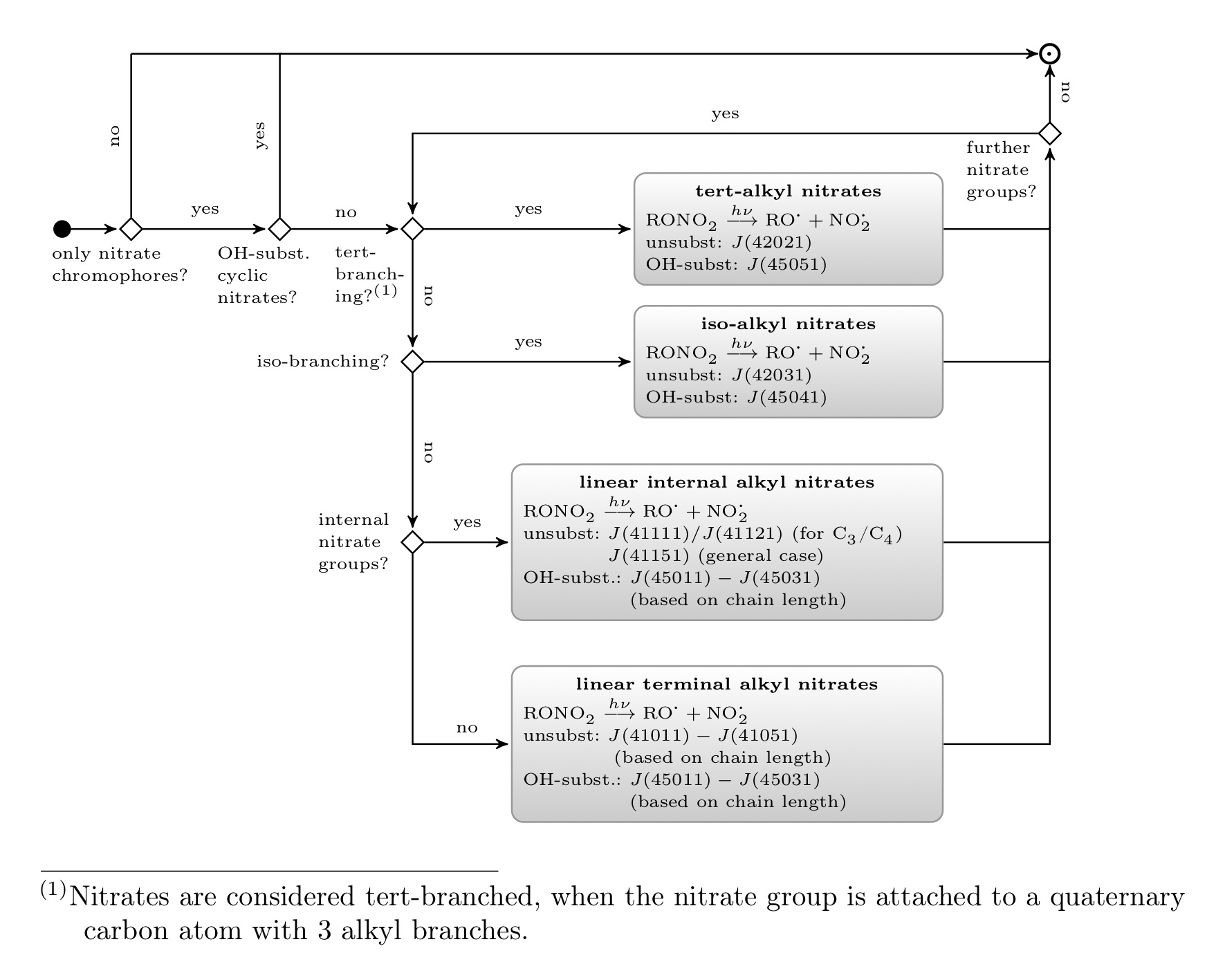-
Notifications
You must be signed in to change notification settings - Fork 0
Organic nitrogen compounds
The schematic below details the decision tree for alkyl nitrates or compounds with
nitrate groups and additional non-chromophoric substituents. The nit routine
loops over all nitrate groups, accumulates the j values and determines the products.
All products and j values with the respective branching ratios are combined in an
overall reaction.
Further protocol rules exist for nitrocompounds, alkyl pernitrates and peroxyacyl nitrates (PANs). Due to the lack of data, surrogate species had to be used as detailed in the table below.
Two channels exist for nitrocompounds. A C–N bond fission occurs for the major fraction in reaction J(4020). A minor fraction re-arranges to an alkene and HONO with an effective product quantum yield of 0.08. J value 4021 is assigned to the reaction and QY = 0.08 is scaled to the j value in each reaction.
In compounds with polyfunctional chromophores including a nitro group, only the main channel is treated for simplicity and due to the high uncertainties in the minor channel. For polyfunctionals with only carbonyl, ketene, and nitro groups, products are determined by the nitro group. In these cases, the main channel is described with an overall j value of J(4020) and the respective j values for the other chromophores (see also the wiki page for compounds with polyfunctional chromophores). For all other polyfunctionals, the unscaled J(4021) plus the respective j values from the other chromophores is used and photolysis products are determined by another chromophore.
For more details on protocol rules for organic nitrogen compounds with polyfunctional chromophores, see here or return to the main page for rules of compounds with different chromophore types.
| Nitrogen compound class | j value |
|---|---|
| Alkyl nitrates | see schematic below |
| Nitrocompounds | J(4020) (main) |
| J(4021) (polyfunctionals and minor scaled by 0.08) | |
| Alkyl pernitrates | J(4022) |
| PANs | J(4027) (NO2 channel) |
| J(4028) (NO3 channel) |

Changes in the MCM/GECKO-A version compared to the original TUV
Adding reactions to TUV
Linking TUV to box models
Mono-aldehydes
Mono-ketones
Ketenes
Polycarbonyls
Organic nitrogen compounds
Organic hydroperoxides and PAAs
Criegee intermediates
Polyfunctional chromophores
MCM/GECKO-A reaction numbers
MCMv3.x reaction numbers
MCM/GECKO-A parameterisations